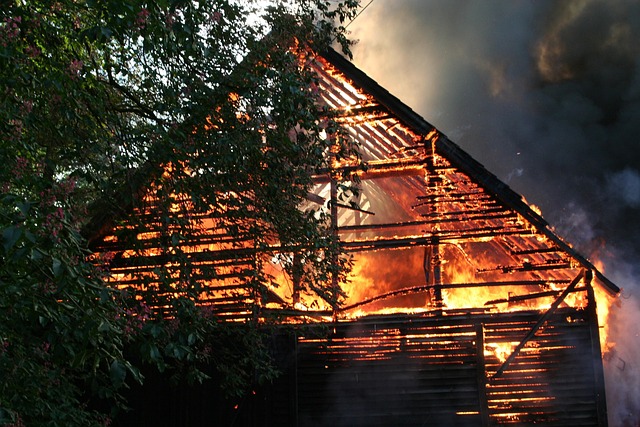In San Antonio, water damage assessment is crucial for fire damage restoration, using advanced meters to identify issues. Repairs involve meticulous plumbing system restoration, including leak containment, disinfection, and adherence to building codes. Effective drying techniques with dehumidifiers prevent mold and secondary damage, integral to the comprehensive San Antonio fire damage restoration process explained.
After a fire, assessing water damage is crucial for San Antonio residents. Understanding the extent of plumbing system repairs is an essential step in the fire damage restoration process. This comprehensive guide explains how to effectively restore your home’s plumbing systems and mitigate further damage. From assessing water damage to implementing drying techniques, we’ll walk you through each critical phase of the fire restoration process in San Antonio, ensuring a safe and efficient recovery.
- Assessing Water Damage After a Fire in San Antonio
- Restoring Plumbing Systems: Step-by-Step Process
- Effective Drying Techniques for Fire-Damaged Homes
Assessing Water Damage After a Fire in San Antonio

After a fire, assessing water damage is a critical step in the San Antonio fire damage restoration process. While fires leave behind visible charred remnants, water can cause hidden issues that require professional attention. Water intrusion often occurs due to broken pipes, melted insulation, or damaged roofs, leading to mold growth and structural instability if not addressed promptly.
In San Antonio, a thorough inspection involves identifying the source of water damage, evaluating the extent of the destruction, and determining the necessary repairs. Our experts use advanced moisture meters to pinpoint affected areas, ensuring that every inch of your property is assessed accurately. This meticulous process forms the backbone of our comprehensive fire restoration services, guaranteeing that your San Antonio home or business is restored to its pre-fire condition safely and efficiently.
Restoring Plumbing Systems: Step-by-Step Process

After a fire, restoring plumbing systems in San Antonio fire-damaged properties is a crucial step in the overall fire damage restoration process. Here’s an explanation of the typical steps involved:
1. Assess the Damage: Begin by thoroughly inspecting all pipes, fixtures, and appliances to determine the extent of the damage caused by the fire and water used during extinguishing. This includes checking for leaks, corroded or melted pipes, and any structural integrity issues within the plumbing system.
2. Containment and Removal: Once the damage is identified, contain any active water leaks and remove burnt or damaged materials from the affected areas. This step helps prevent further contamination and ensures safe access for repairs. It may involve temporary shutdowns of water supply lines to control water damage.
3. Disinfection and Drying: To maintain hygiene standards, disinfect all plumbing components using appropriate solutions. After disinfection, use specialized drying equipment to thoroughly dry out the pipes, walls, and other affected areas. This is essential to prevent mold growth and ensure a healthy environment post-restoration.
4. Repair or Replace: Depending on the severity of damage, repair or replace damaged sections of the plumbing system. This includes fixing or replacing pipes, fittings, valves, and fixtures. Ensure that all materials used meet local building codes and are suitable for use in wet environments.
5. Re-installation and Testing: After repairs or replacements, reinstall all plumbing components, ensuring proper connections and sealing to prevent leaks. Thoroughly test the system by checking water pressure, flow rates, and functionality of fixtures to confirm that everything is operating as expected.
Effective Drying Techniques for Fire-Damaged Homes

After a fire, one of the critical steps in the San Antonio fire damage restoration process is effective drying techniques. It’s essential to address moisture issues promptly to prevent further damage and promote a healthier environment. Professionals utilize advanced equipment like dehumidifiers and air movers to expedite the drying process. These tools help remove excess humidity from affected areas, reducing the risk of mold growth and ensuring the structural integrity of the home.
Proper drying techniques involve not just using machines but also strategic placement of these devices throughout the property. Restoring a fire-damaged home requires meticulousness; every nook and cranny must be dried thoroughly to avoid water seeping into hidden spaces, leading to secondary damage. This meticulous approach is a cornerstone of the San Antonio fire damage restoration process, ensuring that homes are restored safely and effectively.
In the aftermath of a fire in San Antonio, understanding the comprehensive San Antonio fire damage restoration process is key. From assessing water damage to restoring plumbing systems and implementing effective drying techniques, each step requires meticulous attention to ensure a safe and thorough recovery. By following these guidelines, homeowners can effectively navigate the complex journey of fire restoration, transforming damaged properties into vibrant homes once again.
